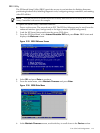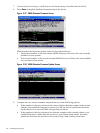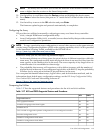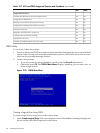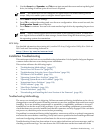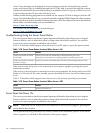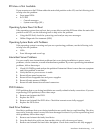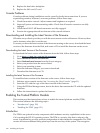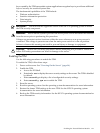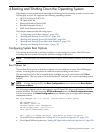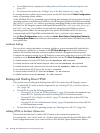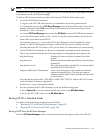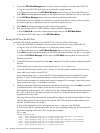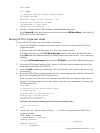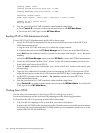
keys created by the TPM encapsulate system application encryption keys to provide an additional
layer of security for sensitive system data.
The fundamental capabilities of the TPM include:
• Platform authentication
• Sensitive information protection
• Data integrity
• System privacy
IMPORTANT: You must run the supported version of the HP-UX operating system to utilize
the TPM security component.
WARNING! Ensure that the system is powered off and all power sources have been disconnected
from the server prior to performing this procedure.
Voltages are present at various locations within the server whenever an ac power source is
connected. This voltage is present even when the main power switch is in the off position.
Failure to observe this warning can result in personal injury or damage to equipment.
CAUTION: Observe all ESD safety precautions before attempting this procedure. Failure to
follow ESD safety precautions can result in damage to the server.
Enabling the TPM
Use the following procedures to enable the TPM.
To enable the TPM, follow these steps:
1. Power on the server. See “Powering On the Server” (page 94).
2. Enable the TPM.
a. Access the EFI Shell.
b. Enter info sec to display the server security settings on the screen. The TPM is disabled
by default.
c. Enter secconfig to display a list of configurable security settings.
d. Enter secconfig tpm on to enable the TPM.
3. Reset the server.
4. Boot the operating system. See the operating system documentation for more information.
5. Restore the former TPM settings to the new TPM. See the HP-UX operating system
documentation for more information.
6. Back up the TPM security information. See the HP-UX operating system documentation for
more information.
Enabling the Trusted Platform Module 121



